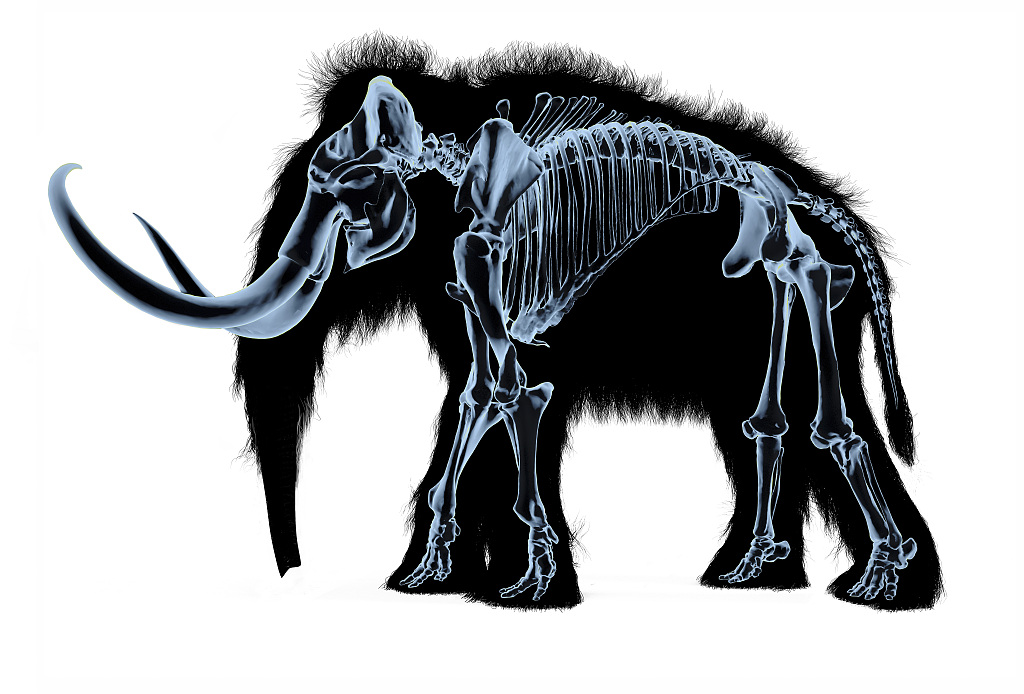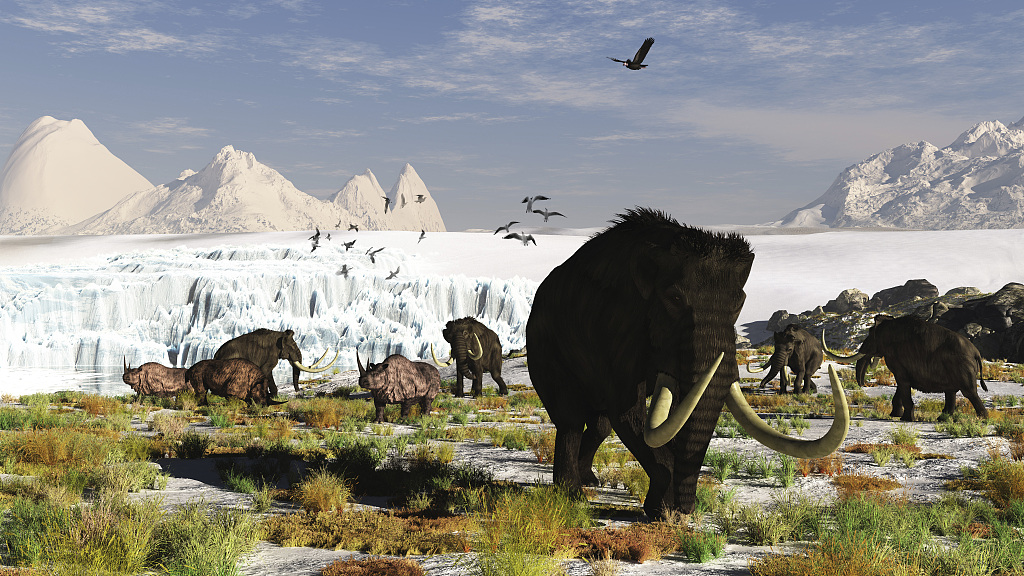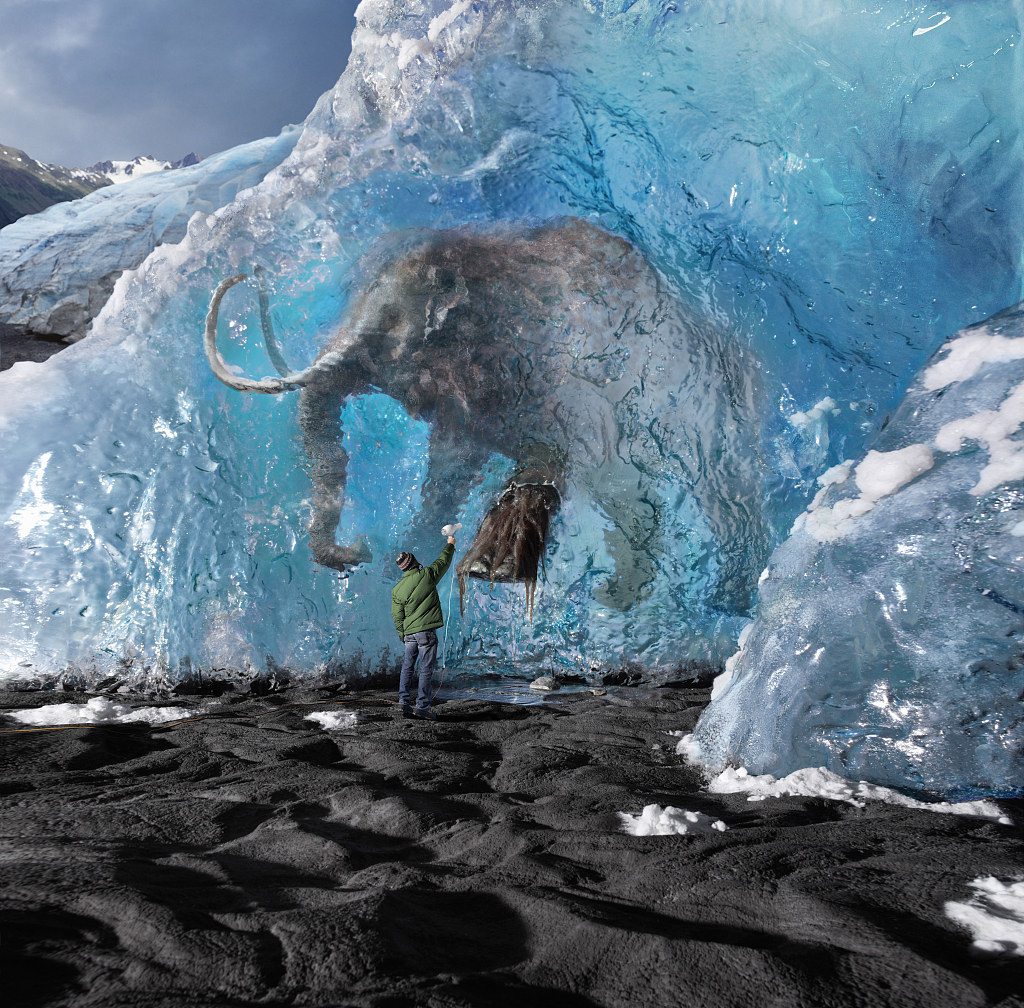Saying about famous ancient giant creatures, a lot of people might first think of a dinosaur. There was another creature that appeared after the dinosaurs extinct, and this creature is also famous for its huge body size. This creature even becomes a "movie star" of being a beloved character in the movie saga "Ice Age". It is the mammoth, a close relative of the modern elephants but extinct about 4,000 years ago.

A schematic picture of a mammoth's skeletons. /VCG
A schematic picture of a mammoth's skeletons. /VCG
Mammoth was believed to appear during the Pleistocene epoch, which started about 2 million years ago and ended about 11,000 years ago. During that time, the climate of the earth was freezing, thus this epoch is also known as the ice age. Living in such an extreme environment, the long hair and thick layers of fat helped the mammoth a lot to keep warm, and its long, curved tusk can sufficiently defend itself from being harmed by other animals.

A three-dimensional reduction picture of mammoths. /VCG
A three-dimensional reduction picture of mammoths. /VCG
Though the scientists have not reached a consensus on whether the general mammoth population died out entirely for climatic reasons, the climate change that occurred 12,000 years ago was still considered a contributing factor. Based on research, glacial retreat resulted in rising sea levels, and forests replaced the tundra where mammoths were used to live. Running out of food and habitat, mammoths had to migrate, and unfortunately, they were trapped in isolated spots in Eurasia and died out eventually.

Climate change might be a reason for mammoth's extinction. /VCG
Climate change might be a reason for mammoth's extinction. /VCG
Except for climate change, scientists indicated that human activities might be another possible reason. The prehistoric human that living during the period of the mammoth is known as the Clovis culture, as archaeologists have found many mammoth fossils at Clovis sites, hunting became a possible reason to contribute to the extinction.
With the development of science, scientists now are making efforts to bring this giant creature back to the world. A project called the "Mammoth Resurrection Plan" has been launched, and scientists had already succeeded in resurrected genes from a mammoth species that survived on a Siberian island. This plan also attracts much attention on the internet, and most of the netizens are wishing a success as the plan provides hope to bring the extinct species back to the world.

Scientists are working to "bring them back". /VCG
Scientists are working to "bring them back". /VCG
The Lost Species
When the last individual of a species closes its eyes, the species is thought to be extinct from the world. Reasons for extinction may vary, but human activity is one that cannot be ignored. This series is going to tell the stories of extinct species and to track their splendid history before the world lost them.
Read more from the series:
Dodo: Flightless bird that only exists in Alice's Wonderland
Tasmanian wolf: The extinct marsupial that lived as a scapegoat
Passenger pigeon: Magnificent journey ends in dinner plates
Great auk: Flightless 'penguin' hunted to extinction for its feathers
Carolina parakeet: The high cost of empathy
(Cover image via VCG, designed by CGTN's Fengyuan and Li Wenyi)
(If you want to contribute and have specific expertise, please contact us at nature@cgtn.com.)